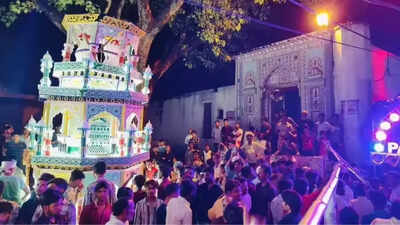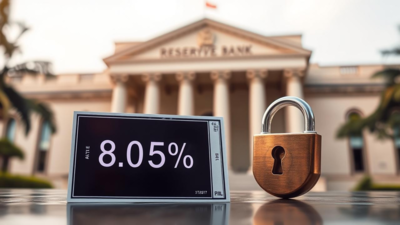200-year ritual lives on: In Madhya Pradesh, tazias ‘pay salami’ to Lord Krishna; Karbala journey follows | Bhopal News

BHOPAL: In a rare gesture of ‘Ganga-Jamuni’ tehzeeb in Bhander town of Datia district of Madhya Pradesh, tazias (Muharram tableaux) by the Muslim community first paid ‘salami’ to Lord Krishna before moving to Karbala on Sunday. This was not a rare occasion but an age-old ritual followed in the town.The approximately 200-year-old Chaturbhuj Krishna temple was constructed by a Muslim family in Bhander town. Ever since, it has become a tradition for the tazias to stop before the temple for ‘salami’ to Chaturbhuj Maharaj (Lord Krishna) before moving ahead.Bhander Karbala committee chief Abdul Jabbar told TOI, “This year we had 37 tazias, and on the last day, the route passes first through Chaturbhuj Maharaj temple and then to the Karbala. The tazias first pay ‘salami’ before moving ahead. The priest of the temple comes out and blesses the tazias.”He added, “I am 63 years old and I have seen it since my childhood. The idol at the temple was found centuries ago by a local Muslim family named the Hazari family in Sontalai, a pond situated in the town. The family then built the temple.”He continued, “Our elders used to tell us when we were kids that on ‘gyaras’ when temple idols come out for a holy bath, the idol used to come out only after at least one member of the Hazari family was present. In their absence, even hundreds of men would not be able to lift or move the idol. Later, close to the country’s Independence, only one elderly female member of the Hazari family was alive. She too was bedridden, and on gyaras when people couldn’t lift the idol, she was somehow brought to the temple. The folklore says, ‘here she prayed and told the idol, Ab uth jaana, koi nahi aa payega humare parivar se’ (from now on get lifted, no one from our family will be able to come now). It is said, people were able to move the idol since then.”According to the priest at the temple, who has been serving here for generations, the Hazari family not only built the temple but also donated land for it. “The temple has around 5 bighas of land donated by the Muslim family that built it. It’s a nearly 200-year-old temple. My maternal grandfather used to be the priest there. After his death, my father became the priest, and after his death, I am the priest,” says Ramesh Panda, 67.“The temple was not only built by a Muslim family but guarded by Muslims. I remember decades ago there was communal tension. At that time, police arrived here but local Muslims came forward assuring the administration that they would guard the temple and no police or force was required,” he added.





